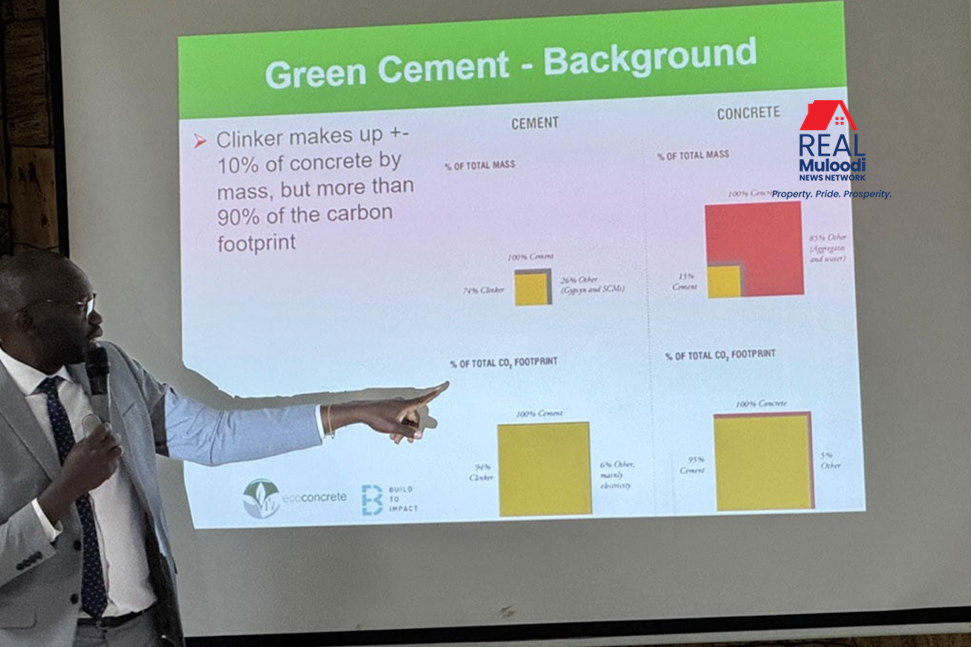UGANDA, Kampala | Real Muloodi News | Uganda’s National Building Review Board (NBRB) and the Science, Technology, and Innovation (STI) Secretariat have highlighted the importance of environment-friendly cement in reducing construction costs and minimising carbon emissions.
During a workshop held on January 27 in Kampala, experts emphasised that environment-friendly cement could play a pivotal role in Uganda’s construction sector.
“In Uganda, concrete is the most widely used construction material, and we all know that the cost of construction is very high. The biggest expense in concrete is cement. Any efforts to reduce costs, such as introducing cheaper binders and cement with a lower carbon footprint, are welcome,” said Eng: Anthony Rucukye, NBRB investigations manager.
Rucukye noted that this pilot project has the potential to evolve into a thriving industry that reduces costs and contributes to significant carbon emission reductions.
“This is crucial as our country continues to develop rapidly,” he added.
Eco Concrete Ltd presented its innovations in environment-friendly cement during the workshop. The company showcased cement products from naturally occurring materials such as volcanic ash, clay, limestone, and waste products like blast furnace slag, fly ash, and rice husks.
Geoffrey Olanya, project manager at Eco Concrete Ltd, stated, “In the current cement production process, producing one kilogram of cement generates one kilogram of carbon dioxide. That’s a significant amount, especially considering Uganda’s cement production capacity is seven million tons per year.”
Olanya detailed two key innovations: LPGC, which eliminates clinker—a major source of carbon dioxide emissions in cement production, and LC3, which uses 50% clinker with the remaining materials primarily clay, abundant in Uganda’s central region.
Samuel Okodi, team leader for the Infrastructure Innovations Bureau at STI, expressed strong support for environment-friendly cement.
“People who are conscious of climate change will take note of our efforts, especially since this cement has low emissions. STI is ready to support this project, just as we have supported other initiatives like Kira Motors,” Okodi said.
Highlighting the economic implications, Lands Minister Judith Nabakooba previously noted that about 96% of Ugandans cannot afford the least expensive formal housing unit, which costs around USh183 million. She attributed this to the high cost of construction materials, averaging $275 per square meter.
“The median income for urban Ugandans is USh220,000 per month, while for rural residents, it is USh168,000. This means that 76% of Ugandans can only afford homes between USh12 million and USh24 million. At USh183 million, typical homes are far beyond their reach,” Nabakooba stated.
She emphasised the need for innovative solutions, such as environment-friendly cement, to make housing more affordable by reducing material and labour costs.
READ MORE LIKE THIS:
The Journey of a Female Mason: Nakato’s Rise in Construction
Court Orders Govt to Restore Titles and Pay USh1 Billion in Nakawa-Naguru Case



